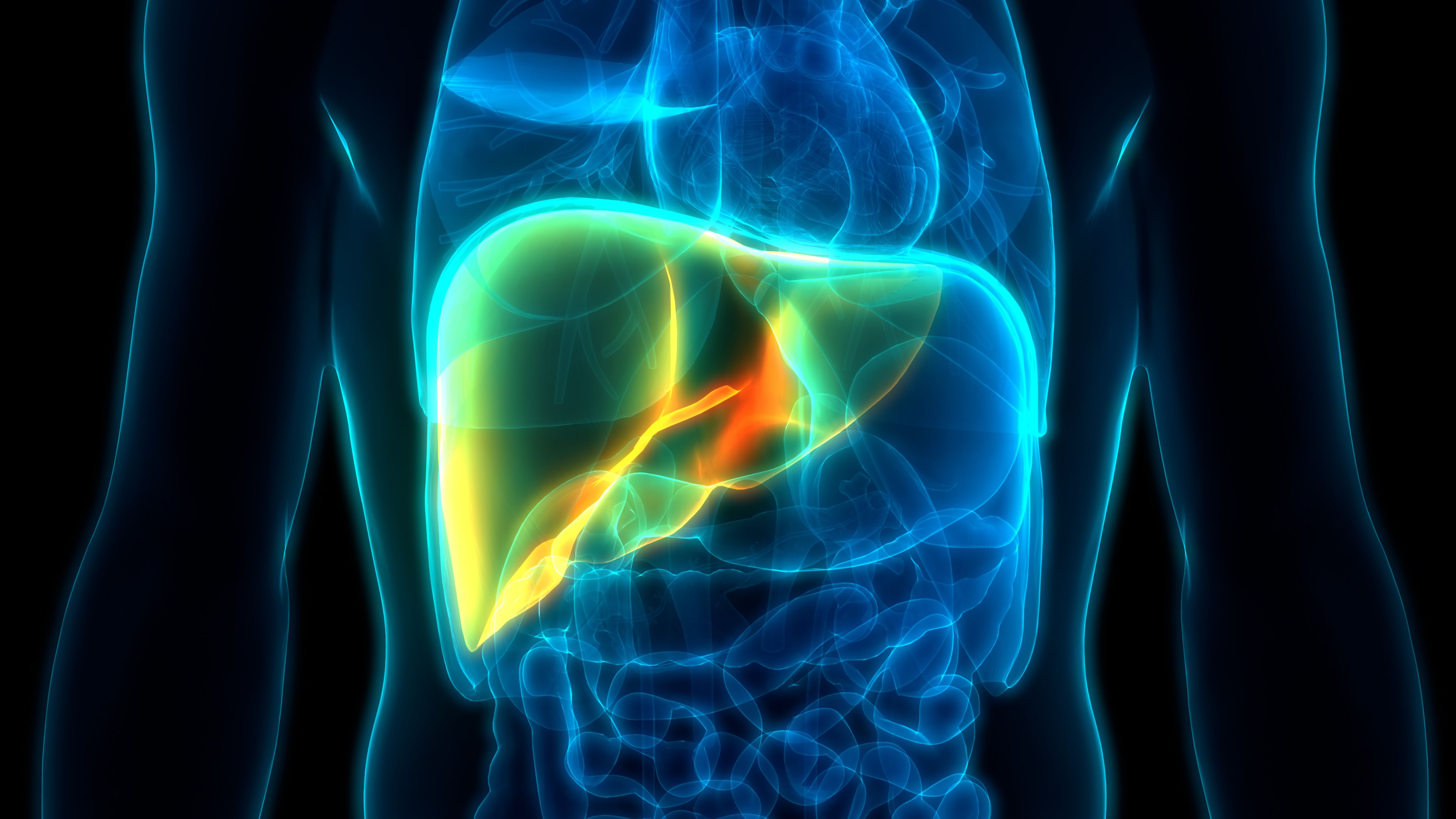New Nanoprodrug System Created to Treat Liver Cancer
Researchers from Central South University of Forestry and Technology demonstrated that a novel nanoprodrug system that can be selectively activated by an excess of hydrogen peroxide (H2O2) in the tumor microenvironment, improving the diagnosis and treatment of liver cancer, according to a recent study published in Analytical Chemistry (1).
Human Internal Digestive Organ Liver Anatomy | Image Credit: © magicmine - stock.adobe.com

Liver cancer occurs when cells begin growing out of control within the liver. In the United States, approximately 25,000 men and 11,000 women get liver cancer each year, with nearly 19,000 men and 9,000 women dying from the disease (2). Located on the upper right side of the body behind the lower ribs, the liver holds many functions, including storing nutrients and filtering and processing chemicals in food, alcohol, and medications. Although the amount of people being afflicted with liver cancer is declining in the United States, the disease is more common in other parts of the world. Additionally, liver cancer has a high recurrence rate, meaning that those who have recovered from the condition have high risks of being afflicted with it again in the future. These conditions have led international researchers to search for ways to mitigate the appearance and growth of liver cancer.
Near-infrared (NIR) fluorescence cancer imaging has been a recently growing field for preclinical and clinical application for clinical management of cancer patients. This stems from its various advantageous features, such as a high spatial resolution, portability, real-time display, and detailed molecular profiling with the multiplexed use of fluorescent probes (3). These features enable various aspects of in vivo cancer imaging, such as cancer detection and characterization, lymphatic imaging (sentinel lymph node detection), and surgical and endoscopic guidance.
Read More: High-Definition Fourier Transform Infrared Spectroscopic Imaging of the Tumor Microenvironment
This study, led by Liyi Zhou, attempted to improve the detection of treatment of liver cancer by developing a new imaging and treatment nanoprodrug system. Currently, small molecule drugs cannot be used for cancer diagnosis because of fast imaging agent diffusion and low efficacy in treatment, the latter of which stems from poor water solubility and significant toxic side effects.
In this study, the scientists produced a nanoprodrug system that can accumulate in a tumor site and be selectively activated by an excess of hydrogen peroxide (H2O2) in the tumor microenvironment. This activation releases NIR solid-state organic fluorescence probe (HPQCY-1) and phenylboronic acid-modified camptothecin (CPT) prodrugs. Both prodrugs can be activated further in tumor sites for achieving more precise in situ near-infrared fluorescence imaging and treatment, in addition to reducing the toxic effects of drugs on normal tissue.
Along with these findings, the scientists incorporated hydrophilic multivalent chitosan as a carrier, allowing the system to effectively improve its water solubility. To the researchers, these findings provide a practical new approach for the diagnosis and treatment of liver cancer.
References
(1) Xie, C.; Peng, Y.; Zhang, Z.; et al. Tumor Microenvironment Activatable Nanoprodrug System for In Situ Fluorescence Imaging and Therapy of Liver Cancer. Anal. Chem. 2024, 96 (12), 5006–5013. DOI: 10.1021/acs.analchem.4c00317
(2) Liver Cancer. U.S. Department of Health & Human Services 2024. https://www.cdc.gov/cancer/liver/index.htm (accessed 2024-4-15)
(3) Kosaka, N.; Ogawa, M.; Choyke, P. L.; Kobayashi, H. Clinical Implications of Near-Infrared Fluorescence Imaging in Cancer. Future Oncol. 2009. 5 (9), 1501–1511. DOI: 10.2217/fon.09.109